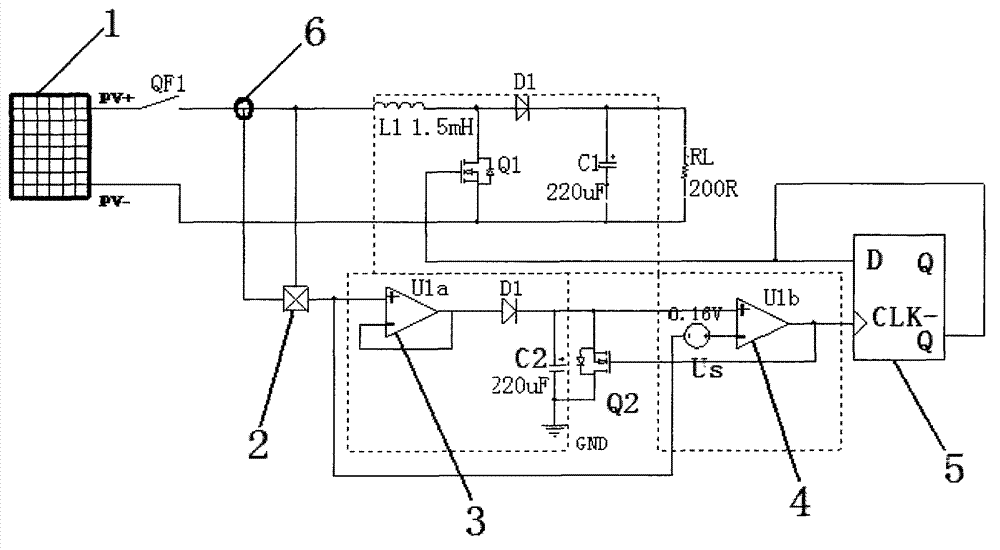Analog circuit implementation method for MPPT (maximum power point tracking) of low-power photovoltaic inverter system
A photovoltaic inverter and analog circuit technology, applied in photovoltaic power generation, control/regulation systems, and regulation of electrical variables, can solve problems such as high cost and complex structure, and achieve low cost, easy implementation, and real-time tracking effects
- Summary
- Abstract
- Description
- Claims
- Application Information
AI Technical Summary
Problems solved by technology
Method used
Image
Examples
Embodiment Construction
[0020] Depend on figure 1 As shown, the components of the present invention mainly include: photovoltaic array 1, BOOST boost chopper circuit, voltage and current signal acquisition device 6, analog multiplier 2, peak detector 3, voltage compensation comparator 4 with reset circuit, D Trigger 5. Photovoltaic array 1 provides a DC source for the entire system. Changing the duty cycle of the BOOST chopper circuit can track the maximum power point of the photovoltaic system. The voltage and current signal acquisition device provides sampling of voltage and current signals. Calculate the product output, and then detect and hold the peak signal through the peak detector. When the operating power exceeds the maximum power point, the voltage compensation comparator compares and outputs the CLK pulse signal, and feeds back the output of the peak detector at the same time, turning on the Q2 switch tube to make the peak value The detector maintains the current peak signal, and the D fl...
PUM
 Login to View More
Login to View More Abstract
Description
Claims
Application Information
 Login to View More
Login to View More - R&D
- Intellectual Property
- Life Sciences
- Materials
- Tech Scout
- Unparalleled Data Quality
- Higher Quality Content
- 60% Fewer Hallucinations
Browse by: Latest US Patents, China's latest patents, Technical Efficacy Thesaurus, Application Domain, Technology Topic, Popular Technical Reports.
© 2025 PatSnap. All rights reserved.Legal|Privacy policy|Modern Slavery Act Transparency Statement|Sitemap|About US| Contact US: help@patsnap.com


